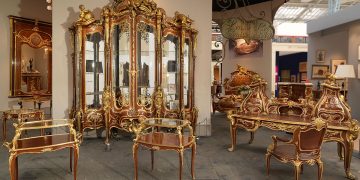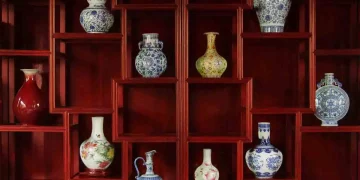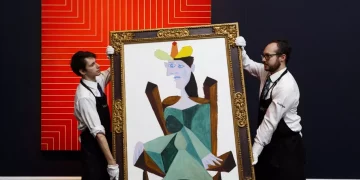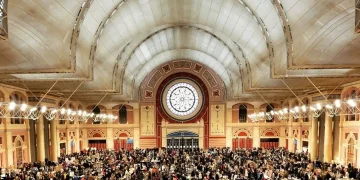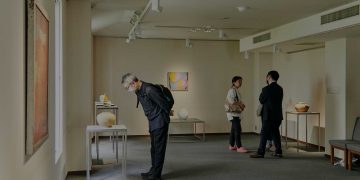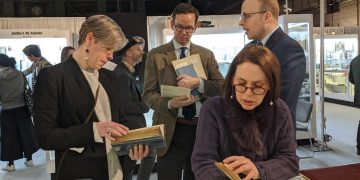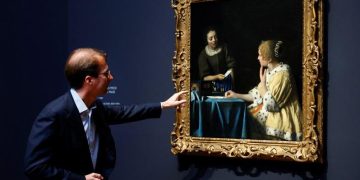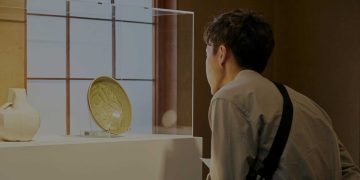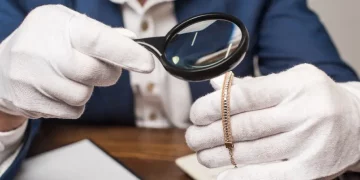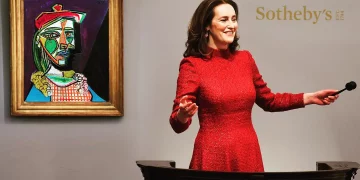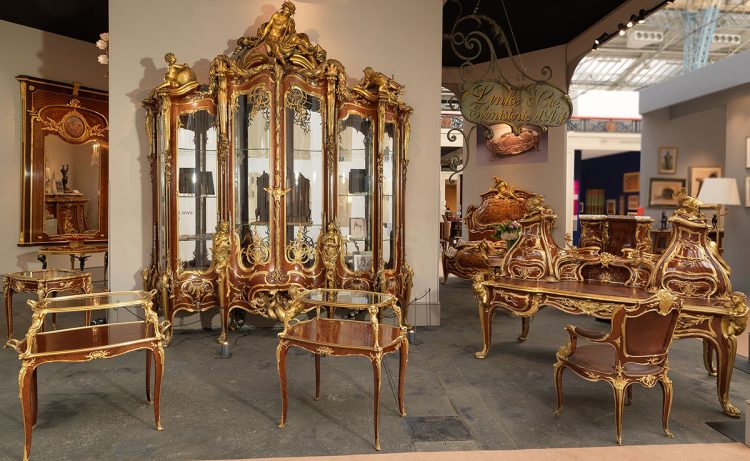Introduction
The antique collectibles market has experienced significant growth over recent years, with certain categories seeing record-breaking prices at auctions and private sales. While antiques have always held a certain appeal due to their historical significance, craftsmanship, and rarity, the surge in demand and rising prices have caught the attention of both seasoned collectors and new investors alike. But what’s behind this latest boom in the antique market?
In this article, we will explore the key factors that are fueling the recent uptick in the antique collectibles market, shedding light on the trends and economic forces that are shaping this lucrative sector in 2025.
1. Increased Interest in Tangible Assets Amid Economic Uncertainty
One of the primary drivers behind the recent rise in antique collectibles is the increasing interest in tangible assets. With global economic uncertainty, fluctuating stock markets, and rising inflation rates, many investors are looking for alternative forms of investment that offer stability and value retention over time. Antiques, particularly those of historical and cultural significance, are seen as safe-haven assets that can appreciate over time, offering protection against market volatility.
Key Points:
- Hedge Against Inflation: In times of economic instability, antiques have historically been viewed as a hedge against inflation. Unlike paper currency or stocks, physical collectibles such as antique furniture, rare clocks, and vintage jewelry often hold or even increase in value during inflationary periods. This makes them an attractive option for those looking to preserve wealth.
- Tangible vs. Digital: With the increasing dominance of digital investments, many individuals are turning back to physical, tangible assets that they can touch, display, and enjoy. The appeal of owning something with real, tangible value has grown stronger, especially in the wake of the digital asset boom.
- Asset Diversification: Collectors and investors are increasingly looking for ways to diversify their portfolios. While art and real estate have traditionally been common choices, antiques are gaining attention as an accessible, long-term investment option.
2. Rising Affluence and New Collectors from Emerging Markets
The growing wealth of new collectors, particularly in emerging markets, is contributing significantly to the surge in antique prices. In regions such as Asia, the Middle East, and Latin America, rising affluence has created a new class of collectors with a growing appetite for high-value antiques. As these regions become wealthier, more individuals are seeking to establish their status and legacy through the acquisition of rare, historical items.
Key Points:
- Emerging Market Demand: With increasing disposable incomes, the middle and upper classes in countries like China, India, and the Gulf States are becoming major players in the global antiques market. The demand for rare antiques from these regions has resulted in a rise in auction prices, as collectors from these countries compete with established buyers in Western markets.
- Cultural Affinity for Antiques: In many emerging markets, antiques are seen as symbols of culture, heritage, and status. For example, Chinese collectors have shown a particular interest in rare Chinese antiques, while collectors in the Middle East often seek antique Islamic art and furniture. As these cultures place value on historical artifacts, demand for these items has driven up their prices.
- Growth of Wealthy Collecting Communities: In these regions, the growing middle and upper classes are eager to secure cultural artifacts that hold personal, cultural, and historical significance. Their increasing participation in the market has driven the demand for a wide variety of antique collectibles.
3. The Impact of Online Auctions and Digital Marketplaces
The rise of online auction platforms and digital marketplaces has made it easier than ever for buyers and sellers to engage with the antique market, thus broadening its reach. Digital platforms like eBay, Artsy, and specialized online auction houses have transformed how antiques are bought and sold, making it possible for collectors to access global markets and allowing sellers to reach a much larger audience.
Key Points:
- Global Access and Increased Liquidity: Online auction platforms have opened the doors for antique buyers and sellers from all corners of the world to connect. As a result, the market has become more liquid, with more frequent transactions and a wider range of buyers, which in turn has driven prices higher.
- Transparent Pricing and Accessibility: Online platforms provide collectors with access to detailed records of past sales, which enables better pricing transparency and encourages more buyers to enter the market. Buyers can compare prices, research sellers, and make more informed decisions, leading to increased confidence in the market.
- Auction House Livestreaming: Leading auction houses like Sotheby’s and Christie’s have embraced live-streaming auctions, which allow global buyers to participate in real-time from the comfort of their homes. This has greatly expanded the reach of high-profile antique auctions and introduced more competitive bidding, which drives prices up.
- Digital Provenance and Authentication: The use of blockchain technology and digital certificates is also helping to verify the authenticity and provenance of antique items, reducing the risk of forgeries and increasing buyer confidence in high-value items. This transparency has added credibility to the market, attracting more investors.

4. The Influence of Social Media and Celebrity Collectors
Social media platforms like Instagram, Pinterest, and TikTok have introduced a new wave of visibility and influence in the antique collectibles market. Prominent collectors, influencers, and even celebrities showcasing their antique acquisitions online have sparked a growing interest in rare and vintage items. As these figures share their collections with millions of followers, they inadvertently raise the profile of specific antiques and styles, creating a trend-driven demand.
Key Points:
- Influencers and Social Media Trends: Celebrities, designers, and influencers are increasingly showcasing antique pieces on their social media accounts, which has sparked widespread interest in vintage and historical collectibles. As influencers embrace antique decor in their homes or wardrobes, they inspire millions of followers to seek similar items.
- Celebrity Auctions and High-Profile Sales: Auctions of celebrity-owned antiques or estates have attracted widespread attention, often pushing prices higher than anticipated. High-profile sales like the auction of the late fashion designer Karl Lagerfeld’s collection or Marilyn Monroe’s personal items attract media attention, creating buzz and increasing market demand.
- Public Appreciation of Antiques as Lifestyle Items: The trend of vintage interior design and sustainable living has also contributed to the rise in demand for antique furniture, textiles, and home decor. As more people turn to sustainable lifestyles, they are also increasingly seeking out antiques as part of their home decor, contributing to the overall surge in demand.
5. Increasing Interest in Sustainability and Environmental Consciousness
In recent years, environmental consciousness has grown, with more consumers and collectors favoring sustainable practices. Antiques are seen as sustainable alternatives to mass-produced modern goods, which has led to an increase in demand for high-quality, durable pieces that have stood the test of time. This aligns with the growing trend of buying less but investing in items that are built to last and can be passed down through generations.
Key Points:
- Eco-friendly Appeal: Antique furniture, art, and other collectibles are not only unique but also environmentally friendly. As more consumers opt for eco-friendly products, antique items, made with natural materials and traditional craftsmanship, are increasingly seen as sustainable options. The “green” movement is contributing to the shift away from fast fashion and cheap, mass-produced items.
- Recycling and Reuse Culture: There’s a growing cultural appreciation for reusing and repurposing antiques. Many people are choosing vintage items over new ones because they have a sense of history and character that contemporary mass-produced items lack. This desire to preserve history through the reuse of antique items has added another layer of value to the market.
- Restoration and Upcycling: The process of restoring or upcycling antique items is becoming more popular, as it provides a way for collectors to invest in pieces that can be made functional and beautiful again. This trend has made it easier for more buyers to participate in the antique market, driving up demand for restoration services and, in turn, the value of the pieces themselves.
Conclusion
The antique collectibles market has entered a period of significant growth, driven by a combination of economic factors, technological advancements, and cultural shifts. From increased interest in tangible assets during times of economic uncertainty to the global expansion of wealthy collectors from emerging markets, multiple forces are at play in boosting the demand for rare, historical items.
With online platforms expanding access to the market, the influence of social media creating viral trends, and a growing emphasis on sustainability, the antique market is set to continue its upward trajectory. Whether driven by investment potential or the appeal of owning pieces with deep historical and emotional value, the future of antique collecting looks brighter than ever.
For collectors, investors, and enthusiasts alike, now may be the perfect time to dive into the world of antique collectibles and secure a piece of history that could see its value soar in the coming years.



